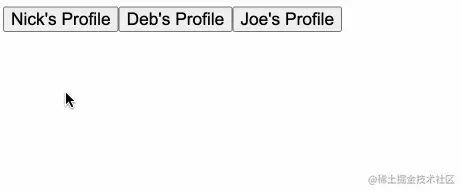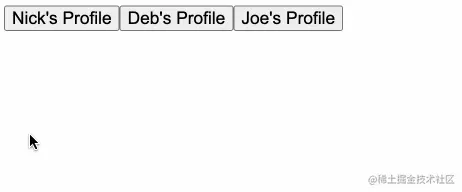React竞态条件Race Condition实例详解
冴羽 人气:0竞态条件
Race Condition,中文译为竞态条件,旨在描述一个系统或者进程的输出,依赖于不受控制事件的出现顺序或者出现时机。
举个简单的例子:
if (x == 5) // The "Check"
{
y = x * 2; // The "Act"
// 如果其他的线程在 "if (x == 5)" and "y = x * 2" 执行之间更改了 x 的值
// y 就可能不等于 10.
}
你可能想,JavaScript 是单线程,怎么可能出现这个问题?
React 与竞态条件
确实如此,但前端有异步渲染,所以竞态条件依然有可能出现,我们举个 React 中常见的例子。
这是一个非常典型的数据获取代码:
class Article extends Component {
state = {
article: null
};
componentDidMount() {
this.fetchData(this.props.id);
}
async fetchData(id) {
const article = await API.fetchArticle(id);
this.setState({ article });
}
// ...
}
看起来没什么问题,但这段代码还没有实现数据更新,我们再改一下:
class Article extends Component {
state = {
article: null
};
componentDidMount() {
this.fetchData(this.props.id);
}
componentDidUpdate(prevProps) {
if (prevProps.id !== this.props.id) {
this.fetchData(this.props.id);
}
}
async fetchData(id) {
const article = await API.fetchArticle(id);
this.setState({ article });
}
// ...
}
当组件传入新的 id 时,我们根据新的 id 请求数据,然后 setState 最新获取的数据。
这时就可能出现竞态条件,比如用户选完立刻点击下一页,我们请求 id 为 1 的数据,紧接着请求 id 为 2 的数据,但因为网络或者接口处理等原因,id为 2 的接口提前返回,便会先展示 id 为 2 的数据,再展示 id 为 1 的数据,这就导致了错误。
我们可以想想遇到这种问题的场景,比如类似于百度的搜索功能,切换 tab 等场景,虽然我们也可以使用诸如 debounce 的方式来缓解,但效果还是会差点,比如使用 debounce,用户在输入搜索词的时候,展示内容会长期处于空白状态,对于用户体验而言,我们可以做的更好。
那么我们该如何解决呢?一种是在切换的时候取消请求,还有一种是借助一个布尔值来判断是否需要更新,比如这样:
function Article({ id }) {
const [article, setArticle] = useState(null);
useEffect(() => {
let didCancel = false;
async function fetchData() {
const article = await API.fetchArticle(id);
// 如果 didCancel 为 true 说明用户已经取消了
if (!didCancel) {
setArticle(article);
}
}
fetchData();
// 执行下一个 effect 之前会执行
return () => {
didCancel = true;
};
}, [id]);
// ...
}
当然你也可以用 ahooks 中的 useRequest,它的内部有一个 ref 变量记录最新的 promise,也可以解决 Race Condition 的问题:
function Article({ id }) {
const { data, loading, error} = useRequest(() => fetchArticle(id), {
refreshDeps: [id]
});
// ...
}
效果演示
问题复现
为了方便大家自己测试这个问题,我们提供相对完整的代码。以 《Avoiding Race Conditions when Fetching Data with React Hooks》中的例子为例,出现 Race Condition 问题的代码如下:
const fakeFetch = person => {
return new Promise(res => {
setTimeout(() => res(`${person}'s data`), Math.random() * 5000);
});
};
const App = () => {
const [data, setData] = useState('');
const [loading, setLoading] = useState(false);
const [person, setPerson] = useState(null);
useEffect(() => {
setLoading(true);
fakeFetch(person).then(data => {
setData(data);
setLoading(false);
});
}, [person]);
const handleClick = (name) => () => {
setPerson(name)
}
return (
<Fragment>
<button onClick={handleClick('Nick')}>Nick's Profile</button>
<button onClick={handleClick('Deb')}>Deb's Profile</button>
<button onClick={handleClick('Joe')}>Joe's Profile</button>
{person && (
<Fragment>
<h1>{person}</h1>
<p>{loading ? 'Loading...' : data}</p>
</Fragment>
)}
</Fragment>
);
};
我们实现了一个 fakeFetch函数,用于模拟接口的返回,具体返回的时间为 Math.random() * 5000),用于模拟数据的随机返回。
实现效果如下:

从效果图中可以看到,我们按顺序点击了 Nick、Deb、Joe,理想情况下,结果应该显示 Joe's Data,但最终显示的数据为最后返回的 Nick's Data。
布尔值解决
现在,我们尝试用一个 canceled 布尔值解决:
const App = () => {
const [data, setData] = useState('');
const [loading, setLoading] = useState(false);
const [person, setPerson] = useState(null);
useEffect(() => {
let canceled = false;
setLoading(true);
fakeFetch(person).then(data => {
if (!canceled) {
setData(data);
setLoading(false);
}
});
return () => (canceled = true);
}, [person]);
return (
<Fragment>
<button onClick={() => setPerson('Nick')}>Nick's Profile</button>
<button onClick={() => setPerson('Deb')}>Deb's Profile</button>
<button onClick={() => setPerson('Joe')}>Joe's Profile</button>
{person && (
<Fragment>
<h1>{person}</h1>
<p>{loading ? 'Loading...' : data}</p>
</Fragment>
)}
</Fragment>
);
};
实现效果如下:

即便接口没有按照顺序返回,依然不影响最终显示的数据。
useRequest 解决
我们也可以借助 ahooks 的 useRequest 方法,修改后的代码如下:
const App2 = () => {
const [person, setPerson] = useState('Nick');
const { data, loading} = useRequest(() => fakeFetch(person), {
refreshDeps: [person],
});
const handleClick = (name) => () => {
setPerson(name)
}
return (
<Fragment>
<button onClick={handleClick('Nick')}>Nick's Profile</button>
<button onClick={handleClick('Deb')}>Deb's Profile</button>
<button onClick={() => setPerson('Joe')}>Joe's Profile</button>
{person && (
<Fragment>
<h1>{person}</h1>
<p>{loading ? 'Loading...' : data}</p>
</Fragment>
)}
</Fragment>
);
};
代码效果如上,就不重复录制了。
考虑到部分同学可能会对 useRequest 的使用感到困惑,我们简单介绍一下 useRequest的使用:
useRequest 的第一个参数是一个异步函数,在组件初次加载时,会自动触发该函数执行。同时自动管理该异步函数的 loading 、 data 、 error 等状态。
useRequest 同样提供了一个 options.refreshDeps 参数,当它的值变化后,会重新触发请求。
const [userId, setUserId] = useState('1');
const { data, run } = useRequest(() => getUserSchool(userId), {
refreshDeps: [userId],
});
上面的示例代码,useRequest 会在初始化和 userId 变化时,触发函数执行。与下面代码实现功能完全一致:
const [userId, setUserId] = useState('1');
const { data, refresh } = useRequest(() => getUserSchool(userId));
useEffect(() => {
refresh();
}, [userId]);
Suspense
这篇之所以讲 Race Condition,主要还是为了引入讲解 Suspense,借助 Suspense,我们同样可以解决 Race Condition:
// 实现参考的 React 官方示例:https://codesandbox.io/s/infallible-feather-xjtbu
function wrapPromise(promise) {
let status = "pending";
let result;
let suspender = promise.then(
r => {
status = "success";
result = r;
},
e => {
status = "error";
result = e;
}
);
return {
read() {
if (status === "pending") {
throw suspender;
} else if (status === "error") {
throw result;
} else if (status === "success") {
return result;
}
}
};
}
const fakeFetch = person => {
return new Promise(res => {
setTimeout(() => res(`${person}'s data`), Math.random() * 5000);
});
};
function fetchData(userId) {
return wrapPromise(fakeFetch(userId))
}
const initialResource = fetchData('Nick');
function User({ resource }) {
const data = resource.read();
return <p>{ data }</p>
}
const App = () => {
const [person, setPerson] = useState('Nick');
const [resource, setResource] = useState(initialResource);
const handleClick = (name) => () => {
setPerson(name)
setResource(fetchData(name));
}
return (
<Fragment>
<button onClick={handleClick('Nick')}>Nick's Profile</button>
<button onClick={handleClick('Deb')}>Deb's Profile</button>
<button onClick={handleClick('Joe')}>Joe's Profile</button>
<Fragment>
<h1>{person}</h1>
<Suspense fallback={'loading'}>
<User resource={resource} />
</Suspense>
</Fragment>
</Fragment>
);
};
加载全部内容